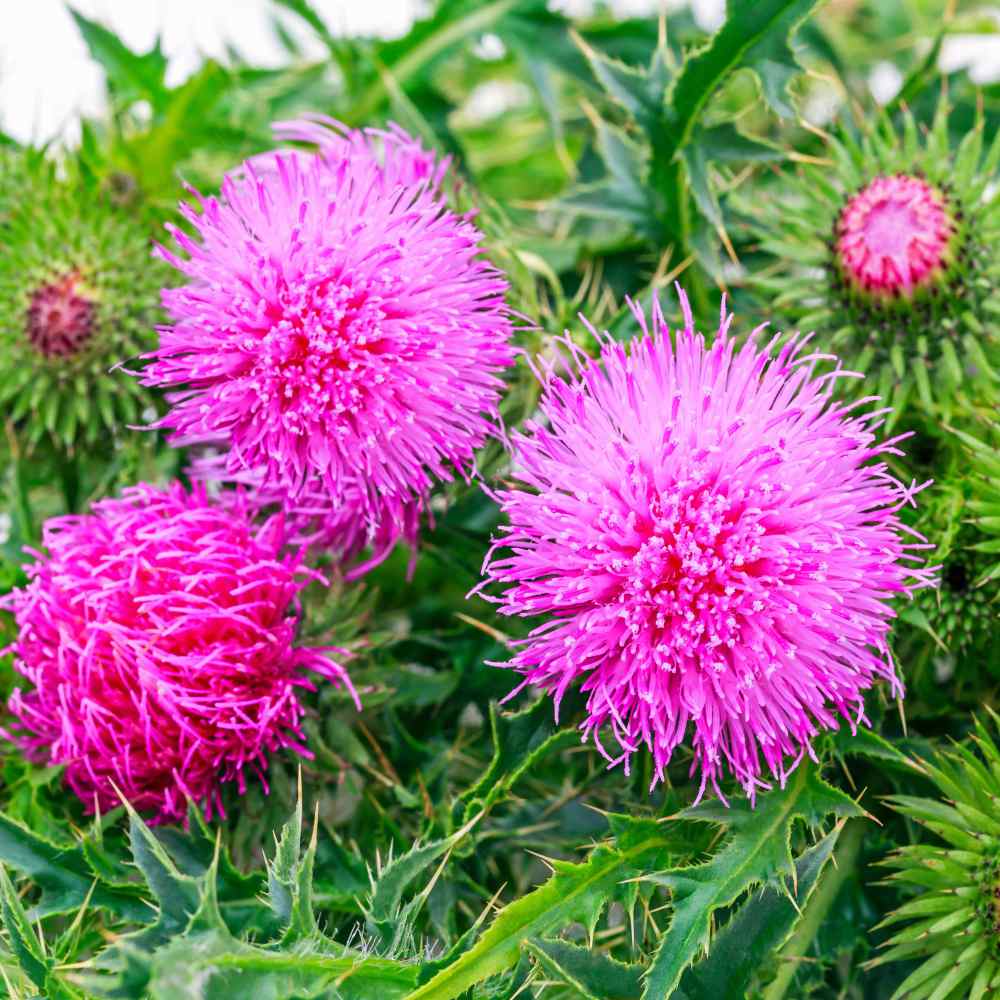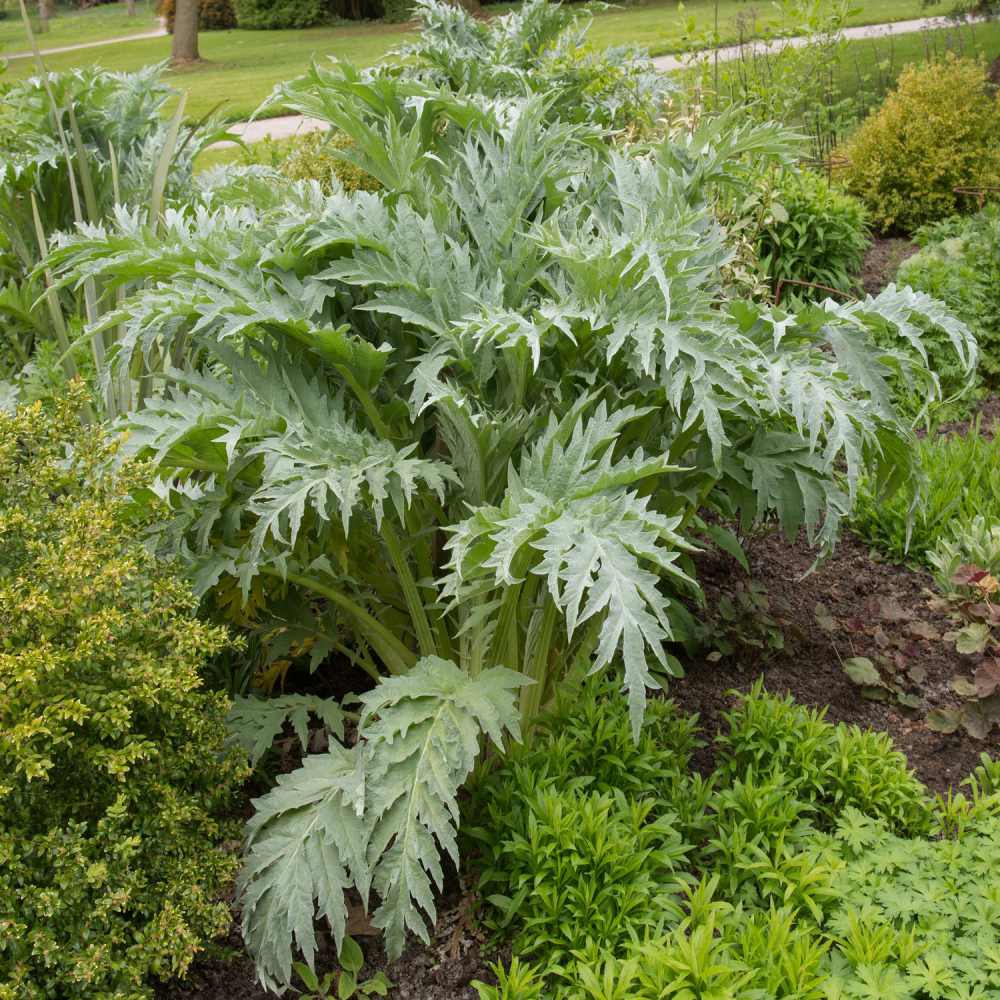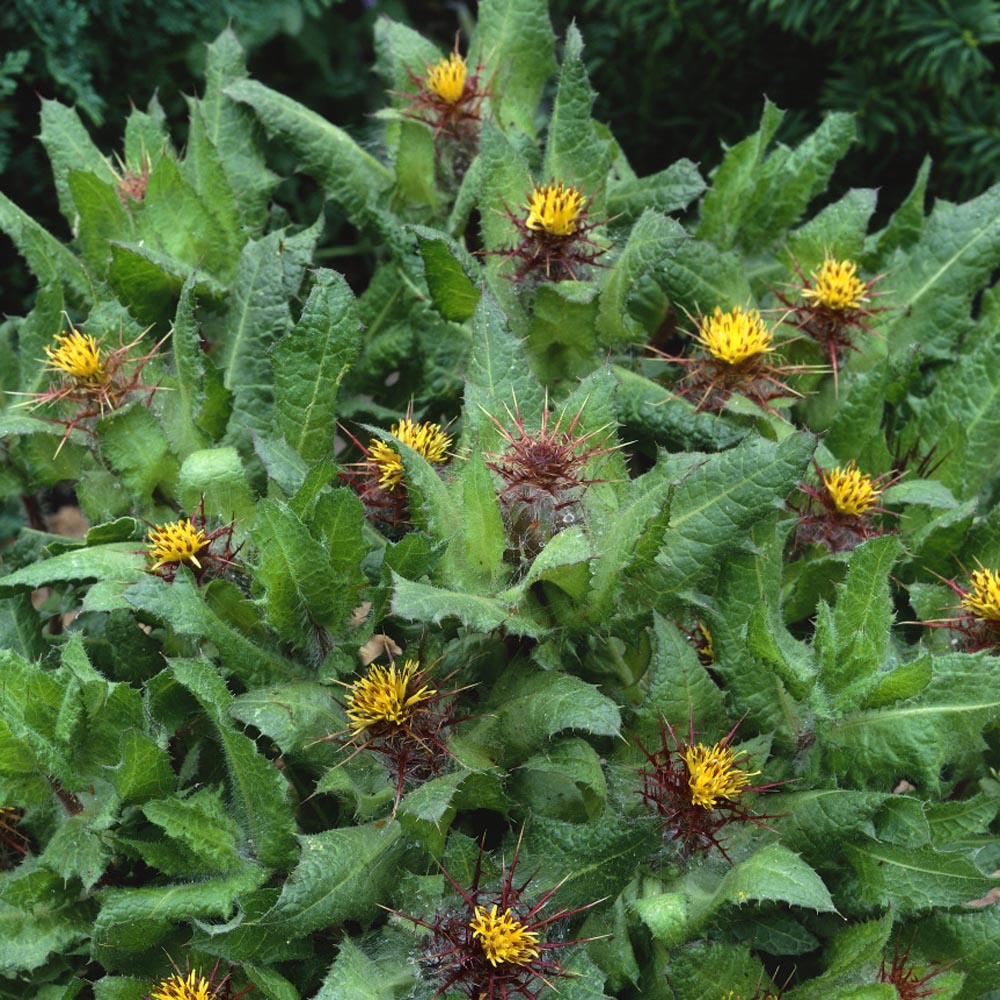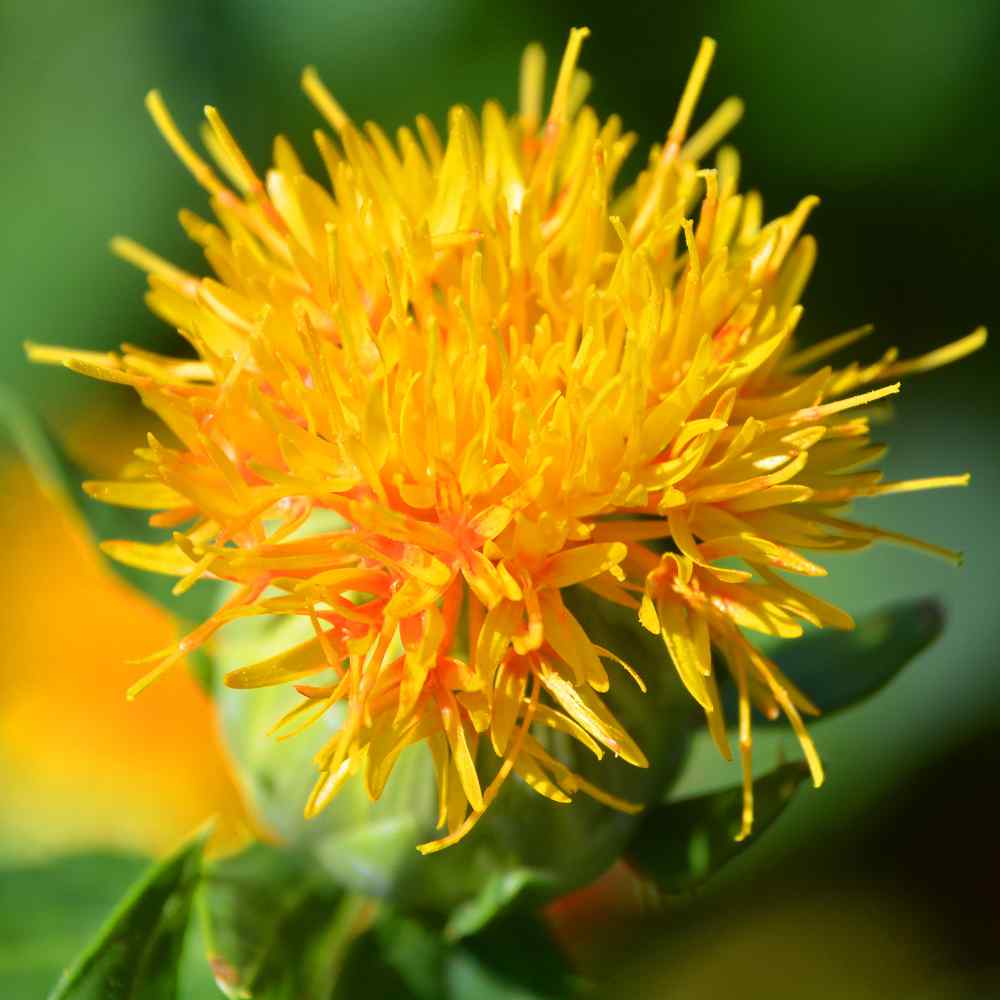
Blessed Thistle Planting Guide
Quick Facts About Blessed Thistle
Blessed thistle is an herb that’s typically grown as an annual. This herb goes by many names from blessed thistle to holy thistle, and its scientific name is cnicus.
Planting Time
Sow seeds directly outdoors in the spring after danger of frost has passed.

Planting Location
Grows best in full sun, with good draining soil. Rocky and poor soil is acceptable.
How to Plant Blessed Thistle
Outdoor Planting Instructions
- Sow directly outdoors in the spring after all danger of frost has passed.
- Seeds require darkness to germinate, and should be planted at a depth of 1/4 inch.
- Sow 1 - 2 seeds per plant. Ensure you leave one to two feet of space between each plant.
- Keep seeds moist not wet until germination.
Indoor Planting Instructions
- If using this method, ensure you have seed starting pots as the seeds are too large to work in a growing tray.
- Be sure to only place one seed per growing container. Fill the containers with well-draining soil and place the seeds a 1/4 inch deep.
- Water seed with a spray bottle to ensure soil is damp but not too wet. Place the seed in an area with plenty of light and warmth.
- They should sprout in two to three weeks.
- When seedlings emerge, provide plenty of light on a sunny windowsill or grow seedlings beneath fluorescent plant lights turned on 16 hours per day, off for 8 hours at night. Raise the lights as the plants grow taller. Incandescent bulbs will not work for this process because they will get too hot. Most plants require a dark period to grow, do not leave lights on for 24 hours.
- Transplant hardened-off seedlings to the garden after the frost.
- Before planting outdoors, seedlings need to be “hardened off”. Accustom seedlings to outdoor conditions by moving them to a sheltered place outside for a week. Be sure to protect them from wind and hot sun at first. If frost threatens at night, cover or bring containers indoors, then take them out again in the morning. This hardening off process toughens the plant’s cell structure and reduces transplant shock and scalding.

Care And Maintenance
- Keep weeds under control during the growing season. Weeds compete with plants for water, space and nutrients, so control them by either cultivating often or use a mulch to prevent their seeds from germinating.
- Mulches also help retain soil moisture and maintain even soil temperatures. For annuals an organic mulch of shredded leaves lends a natural look to the bed and will improve the soil as it breaks down in time. Always keep mulches off a plant’s stems to prevent possible rot.
- Ensure you keep the water around the plant balanced. If you oversaturate things, it could lead to root or crown rot. Use deep watering method with Blessed Thistle plants, be sure to water the plant for a longer period of time, fewer days of the week. The water should penetrate down to the roots during the watering session and saturate the ground surrounding the plant. Pressing your finger into soil beneath your plant to test soil moisture(watch out for the prickly parts of your plant). If the soil is dry to your first knuckle, it’s time to water again. If not, hold off for a few days before repeating the testing process.
- When plant has large enough foliage to harvest, remove 1/3 of the plant at a time. You should harvest prior to the plant flowering to avoid reseeding. You should be able to harvest two or three times each season.




































